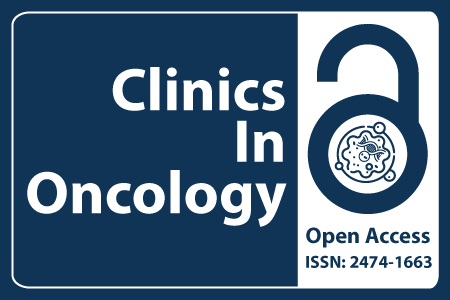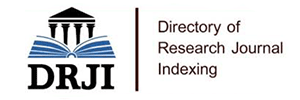
Journal Basic Info
**Impact Factor calculated based on Google Scholar Citations. Please contact us for any more details.Major Scope
- Endoscopy Methods
- Sarcomas
- Melanoma/Skin Cancer
- Lung Cancers
- Kidney Cancer
- Breast Cancer
- Colorectal Cancer
- Ovarian Cancer
Abstract
Citation: Clin Oncol. 2021;6(1):1885.DOI: 10.25107/2474-1663.1885
Impact of Neoadjuvant Systemic Chemotherapy and Delayed Enucleation for Eyes with Advanced Intraocular Retinoblastoma on High-Risk Pathological Features
Mona Mohammad, Reham Shehada, Ibrahim Al-Nawaiseh, Mustafa Mehyar, Maysa Al-Hussaini, Imad Jaradat, Iyad Sultan, Hadeel Halalsheh, Jakub Khzouz and Yacoub A Yousef
Department of Surgery (Ophthalmology), King Hussein Cancer Centre (KHCC), Jordan
Department of Pathology, King Hussein Cancer Centre (KHCC), Jordan
Department of Radiation Oncology, King Hussein Cancer Centre (KHCC), Jordan
Department of Pediatric Oncology, King Hussein Cancer Centre (KHCC), Jordan
*Correspondance to: Mona Mohammad
PDF Full Text Research Article | Open Access
Abstract:
Purpose: To evaluate the impact of neo-adjuvant systemic chemotherapy on High-Risk Pathologic Features (HRPF) in retinoblastoma and compare the risk with eyes that underwent primary enucleation.
Methods: A retrospective study of 121 eyes from 118 patients who underwent enucleation between November 2009 and January 2020 at the King Hussein Cancer Center (KHCC) Amman/Jordan. Data included demographics, tumor stage, and time from diagnosis to enucleation, follow-up, metastasis, and mortality.
Results: Seventy-two (60%) eyes underwent primary enucleation and 49 (40%) eyes were secondarily enucleated after failure of systemic chemotherapy. Compared to the primarily enucleated patients, those in the secondary group were significantly younger at diagnosis (p=0.0014), had bilateral disease (p=0.0001) and presented with less advanced disease (p=0.016).
Even though the overall prevalence of HRPF was nearly similar between two groups (35.5% vs. 37.5%), (p<0.585), eyes with primary enucleation were significantly more likely to harbor massive choroidal invasion (p=0.0315) and post-laminar optic nerve invasion (p=0.027). In the other hand, secondary enucleated eyes were significantly more likely to harbor anterior chamber invasion (p=0.013). We
studied the prevalence of HRPF for International Intraocular Retinoblastoma Classification (IIRC) group D and E eyes separately, and compared between primary and secondary enucleation for each subgroup (D and E) and found that the prevalence of HRPF was similar (P=0.58, 1.0 respectively). Of interest, the difference in time from diagnosis to enucleation in secondarily enucleated eyes was not significant predictive factor for HRPF (p=0.50). In terms of metastasis and survival, there was no significant difference between primary and secondary enucleated eyes (p=0.156, 0.44 respectively).
Conclusion: Systemic chemotherapy has the capability to downstage the level of tumor extension as detected pathologically. Primary and secondary enucleated eyes are comparable in low metastatic risk only if strict protocols of management and meticulous exam to detect early signs of disease progression. Therefore, controlled ocular salvage should be tried with caution in candidate advanced intraocular retinoblastoma cases to avoid possible risk of under treatment of micro metastatic diseases and subsequent mortality.
Keywords:
Retinoblastoma; Enucleation; Neoadjuvant chemotherapy; High-risk histopathological features
Cite the Article:
Mohammad M, Shehada R, Al-Nawaiseh I, Mehyar M, Al-Hussaini M, Jaradat I, et al. Impact of Neoadjuvant Systemic Chemotherapy and Delayed Enucleation for Eyes with Advanced Intraocular Retinoblastoma on High-Risk Pathological Features. Clin Oncol. 2021;6:1885..













